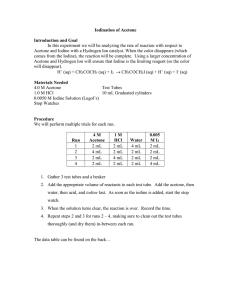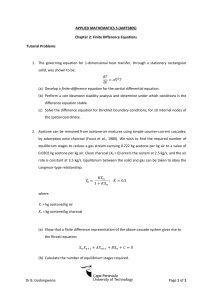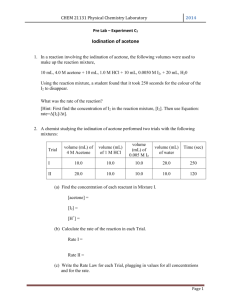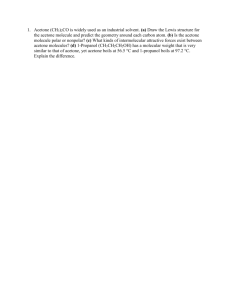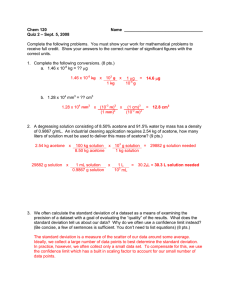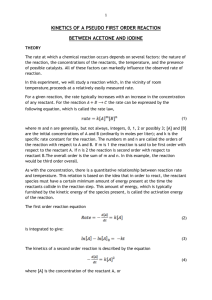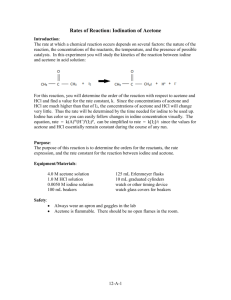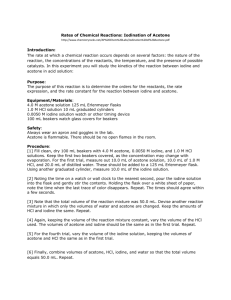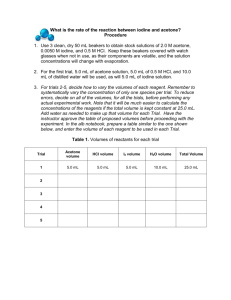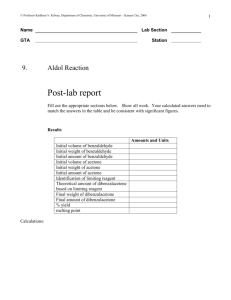Lab 16: Iodination of Acetone
advertisement
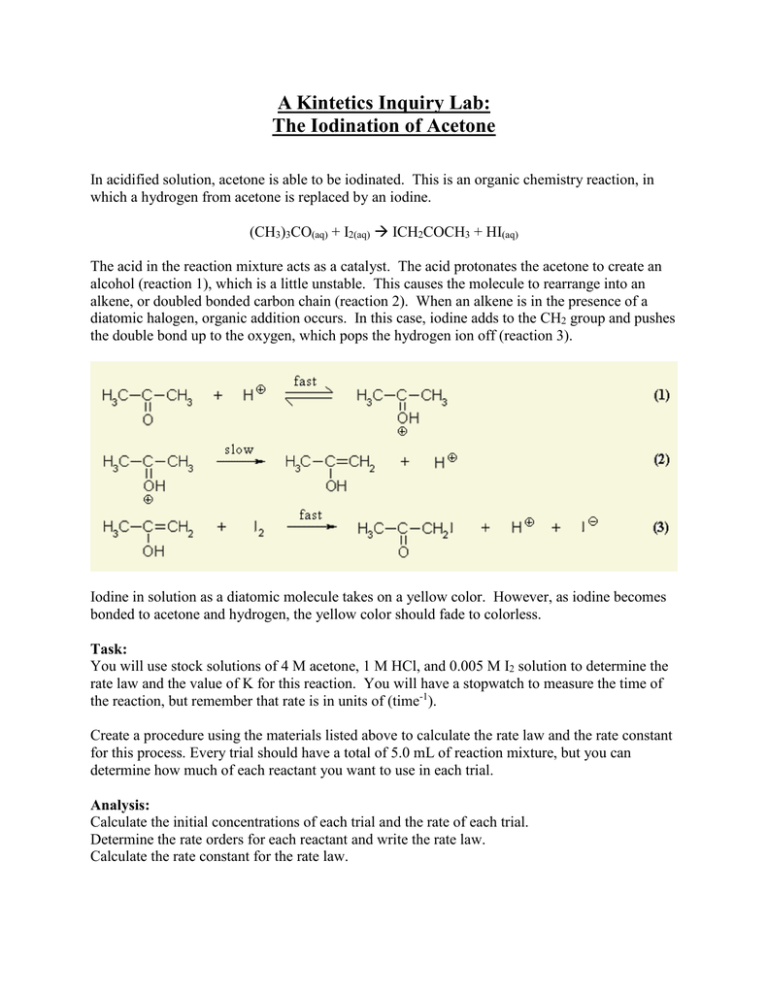
A Kintetics Inquiry Lab: The Iodination of Acetone In acidified solution, acetone is able to be iodinated. This is an organic chemistry reaction, in which a hydrogen from acetone is replaced by an iodine. (CH3)3CO(aq) + I2(aq) ICH2COCH3 + HI(aq) The acid in the reaction mixture acts as a catalyst. The acid protonates the acetone to create an alcohol (reaction 1), which is a little unstable. This causes the molecule to rearrange into an alkene, or doubled bonded carbon chain (reaction 2). When an alkene is in the presence of a diatomic halogen, organic addition occurs. In this case, iodine adds to the CH2 group and pushes the double bond up to the oxygen, which pops the hydrogen ion off (reaction 3). Iodine in solution as a diatomic molecule takes on a yellow color. However, as iodine becomes bonded to acetone and hydrogen, the yellow color should fade to colorless. Task: You will use stock solutions of 4 M acetone, 1 M HCl, and 0.005 M I2 solution to determine the rate law and the value of K for this reaction. You will have a stopwatch to measure the time of the reaction, but remember that rate is in units of (time-1). Create a procedure using the materials listed above to calculate the rate law and the rate constant for this process. Every trial should have a total of 5.0 mL of reaction mixture, but you can determine how much of each reactant you want to use in each trial. Analysis: Calculate the initial concentrations of each trial and the rate of each trial. Determine the rate orders for each reactant and write the rate law. Calculate the rate constant for the rate law.
